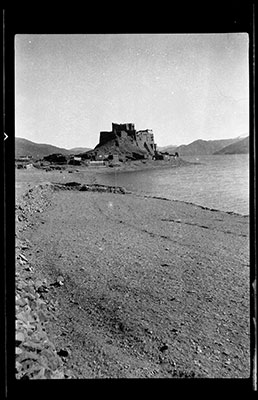
2001.59.13.74.1 (Film negative)


2001.59.13.74.1 (Film negative)

Hugh E. Richardson
Hugh Richardson
1936-38
Yamdrok Tso Region > Pede dzong
2001.59.13.74.1
85 x 60 mm
Negative film nitrate
Donated August 2001
The executors of the estate of Hugh E. Richardson
Hugh E. Richardson
Manual Catalogues - Notes on negative album - 'NYEMO. SAMYE. YARLUNG. RGYAL.' is written on the cover of this blue negative album in white in Richardson's hand. [KC 24/3/2006]
Manual Catalogues - Notes on Blue negative album index - No. 74. 'Samding' [sic]
Manual Catalogues - Richardson's handlist: 'Blue Album. [No.] 74. 'Samding (Bsam-lding) monastery at west end of Yamdrok Lake, seat of the woman incarnation of Rdo-rje Phag-mo'. [sic]
Other Information - Pede Dzong (dpal sde rdzong) is situated in Southern Tibet and on the main trade route from Sikkim to Lhasa. The dzong serves as a fort and an administration centre for the district. [TS 18/7/2005]
Other Information - Dates: This image was probably taken using a Zeiss Super Ikonta C using 6 x 9 negative size and there is a group of related images, the contact prints for which are printed out on Agfa Lupex paper and have distinctively decorative edges, made by using a special guillotine. These images all seem to relate to the period of the British Mission to Lhasa in 1936-37 under Sir Basil Gould or to 1938 at the latest [MS 22/12/2005]
For Citation use:
The Tibet Album.
"Pede dzong fort and settlement on Yamdrok Tso"
05 Dec. 2006. The Pitt Rivers Museum.
<http://tibet.prm.ox.ac.uk/photo_2001.59.13.74.1.html>.
For more information about photographic usage or to order prints, please visit the The Pitt Rivers Museum.
© The Pitt Rivers Museum